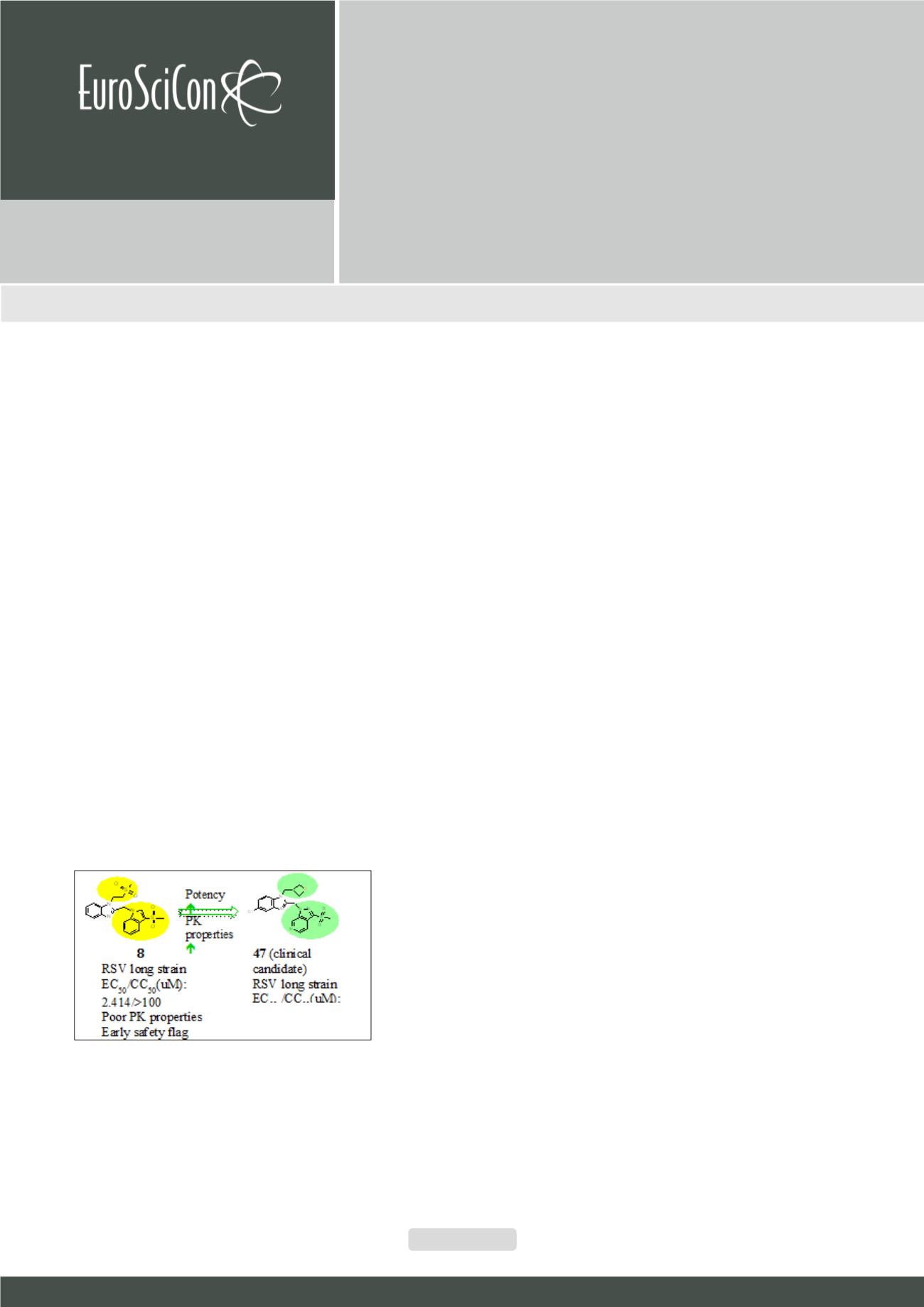

Medchem & Toxicology 2018
Page 33
Journal of Organic & Inorganic Chemistry
ISSN: 2472-1123
A n n u a l C o n g r e s s o n
Medicinal Chemistry,
Pharmacology and toxicology
J u l y 3 0 - 3 1 , 2 0 1 8
Am s t e r d a m , N e t h e r l a n d s
R
ecently we described a novel class of imidazopyridine compounds
that showed exceptional anti-RSV potency in cell culture. However,
unfavorable pharmacokinetic (PK) properties and glutathione (GSH)
adduct liabilities impeded their further development. In a bid to
address the PK and early safety concerns, a small compound library
consisting of dozens of scaffold-hopping analogues was designed
and synthesized for RSV CPE assay screening, which led to the
identification of a new chemical starting point: methylsulfonyl indole
compound 8. In this poster, we present the discovery and optimization
of a series of methylsulfonyl indazoles as potent RSV fusion inhibitors.
In particular, compound 47 was orally efficacious in a RSV mouse
model, with 1.6 log unit viral load reduction at 25 mg/kg BID upon oral
dosing. The results may have broad implications for the design of new
RSV fusion inhibitors, and demonstrate the potential for developing
novel therapies for RSV infection.
Image
Discovery of methylsulfonyl indazoles as potent and orally
active respiratory syncytial virus (RSV) fusion inhibitors
Song Feng
1
, Chao Li
2
, Dongdong Chen
1
, Xiufang Zheng
1
, Hongying
Yun
1
, Lu Gao
1
and Hong C Shen
1
1
Roche Innovation Center, Shanghai, China
2
Ascentage Pharma, Suzhou, Jiangsu, China
Biography
Song Feng has obtained his PhD in 2004 fromShanghai Institue of Materia
Medica(SIMM), Chinese Academy of Sciences(ACS), and completed his
Postdoctoral studies in Arizonal Statie University andOhio State Univerisity
from 2004 to 2006. Now he is a Principal Scientist in Roche Inovation
Center Shagnhai (RICS). He has published more than 25 papers in reputed
journals and more than 10 patents in Cardiovascular and Metabolism
(CVM) and infectious disease research area.
andrew.feng@roche.omSong Feng et al., J Org Inorg Chem 2018, Volume 4
DOI: 10.21767/2472-1123-C3-009
















